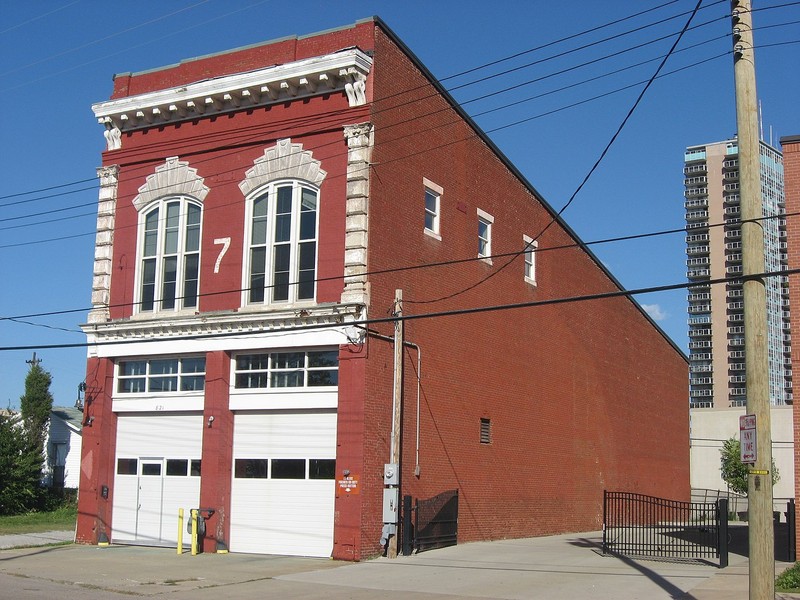Louisville Steam Engine Company No. 7 Fire Station
Introduction
Text-to-speech Audio
Images
Steam Engine Company No. 7 in Old Louisville

Backstory and Context
Text-to-speech Audio
The Louisville Fire Station No. 7, built in 1871, claimed to be the nation's oldest continuously used fire station until it closed in 2009 due to budget cuts. Similar to many of the architectural relics in Old Louisville, the building enjoys a Victorian design.
From the late eighteenth century through the 1830s, Louisville's fire fighting system evolved from water brigades to horse-powered equipment and hand pumps. However, the "Great Fire of 1840" followed by several mismanaged firefights during the 1850s showed the inadequacy of hand pumps, which ushered in the era of steam-powered pumpers. A Cincinnati firm in 1858 delivered "The Eclipse", Louisville's first steam engine. Its success inspired Louisville's General Council to organize the Steam Engine Fire Department of Louisville, which opened during the summer of 1858 with three steam engine stations.
Several fires during the Civil War, sometimes due to "southern sympathizers," pushed the city to update its alarm and response system. In May 1865, Louisville installed its first telegraphic fire alarm system, which replaced the former communication that relied on a chain reaction of bells. The constant improvement of the fire system allowed fire chiefs to request more money for more stations and equipment, and by 1871, the Steam Engine Company #7 served as one of several new stations built in Louisville (including what is now Old Louisville).
Although the history of Steam Engine Company #7 is largely tied to the broader Louisville Fire Department history, its architecture speaks to the history of Old Louisville. The section of Louisville, south of Broadway, emerged similar to a suburb where those with financial means moved away from downtown Louisville to more attractive properties. Numerous homes in what is now Old Louisville enjoy elaborate and elegant architecture. Steam Engine Company #7 resembles that trend as it enjoys a Victorian design with ornate detailing, attractive windows with over-sized voussoirs and rusticated quoins, and an extended cornice with modillions and brackets caps.
Sources
Hackett, Rachel. "8 Historic Firestations." Redstone Architects. September 28, 2018. https://www.redstonearchitects.com/8-historic-fire-stations/.
Hedgepeth, Marty. "Historic Firehouses of Louisville." National Register of Historic Places. nps.gov. 1980. https://npgallery.nps.gov/GetAsset/3aa3785a-751b-4c4c-beb1-d3cb31ff08a8.
--- --- ---. "Kentucky Historic Resources Inventory: Engine House #7." National Register of Historic Places. nps.gov. 1980. https://npgallery.nps.gov/GetAsset/8fe73aad-355e-4588-957d-260c8dfa50b5.
Kleber, John E., ed. The Encyclopedia of Louisville. Lexington: University Press of Kentucky, 2014.
--- --- ---. The Kentucky Encyclopedia. Lexington: University Press of Kentucky, 1992.
"LFD History - Full Text." LouisvilleKY.gov. Accessed April 1, 2021. https://louisvilleky.gov/government/fire/lfd-history-full-text.
Perkins, Elizabeth A. "The Forgotten Victorians: Louisville's Domestic Servants, 1880-1920." The Register of the Kentucky Historical Society 85, no. 2 (1987): 111-37.
By Nyttend - Own work, Public Domain, https://commons.wikimedia.org/w/index.php?curid=22564238
